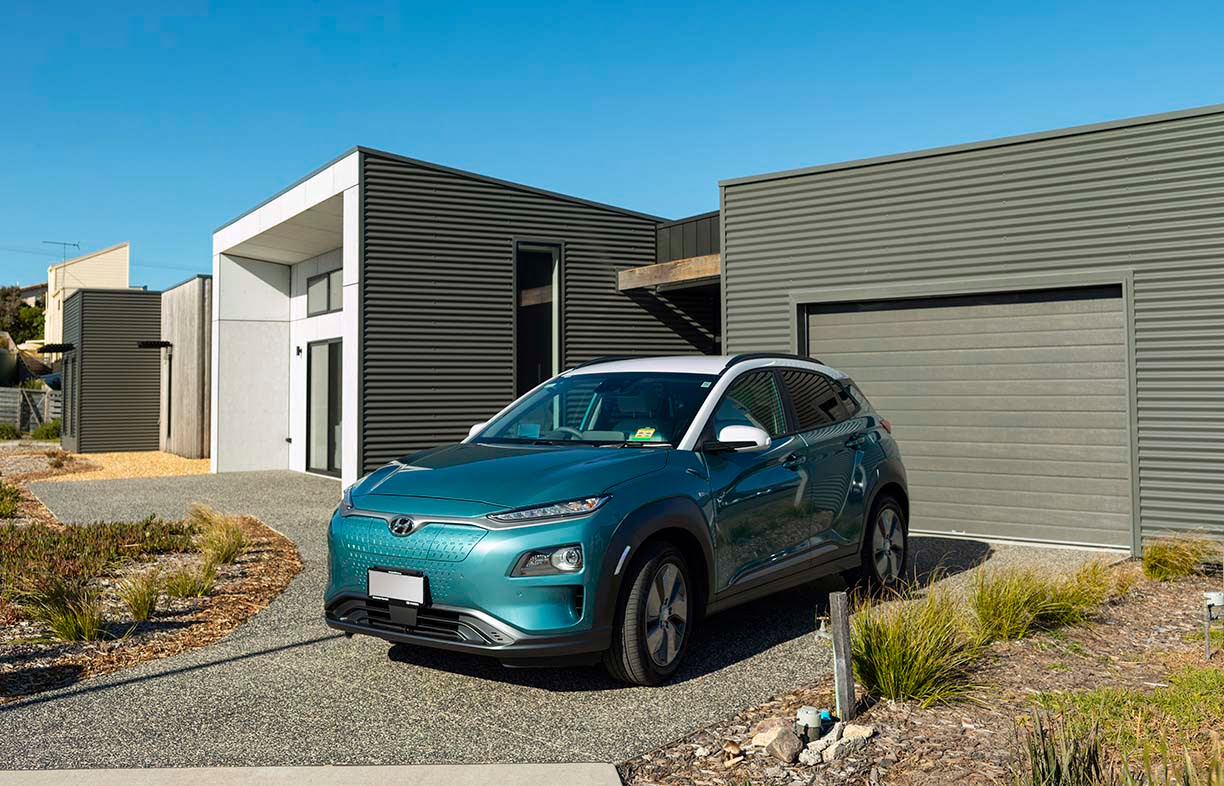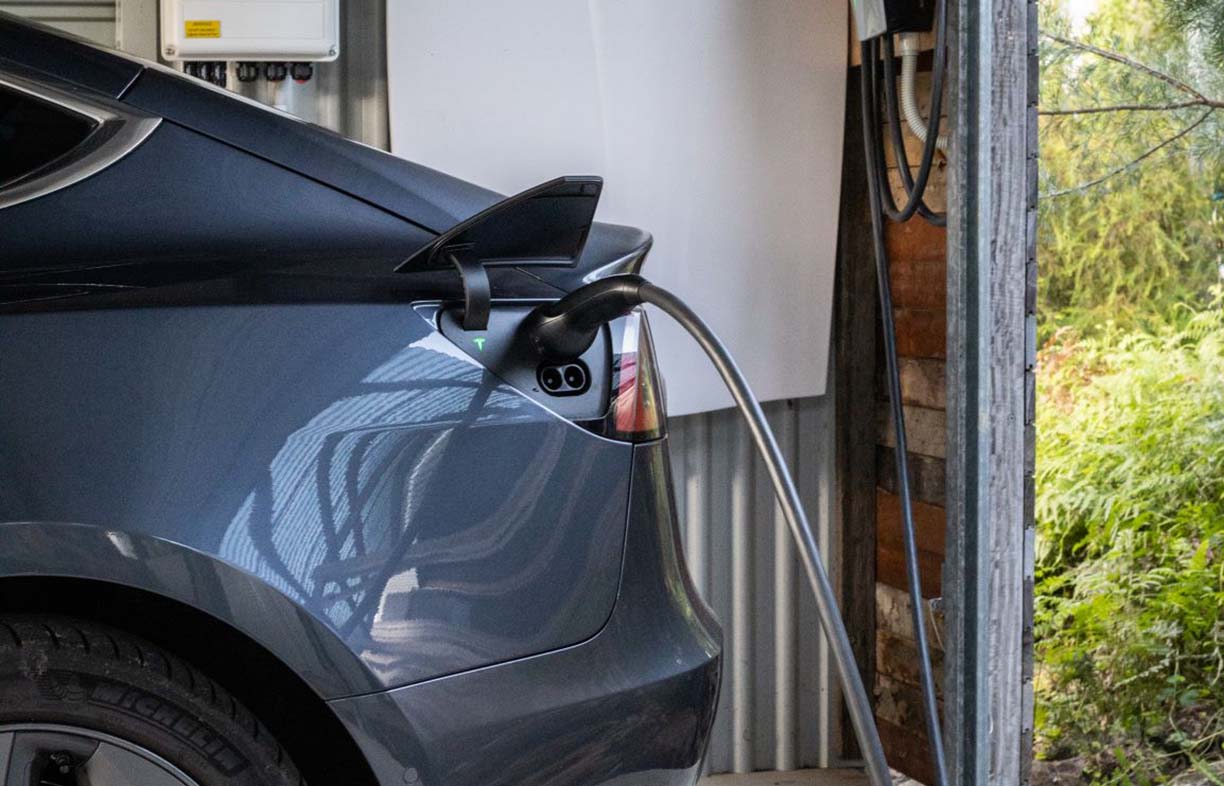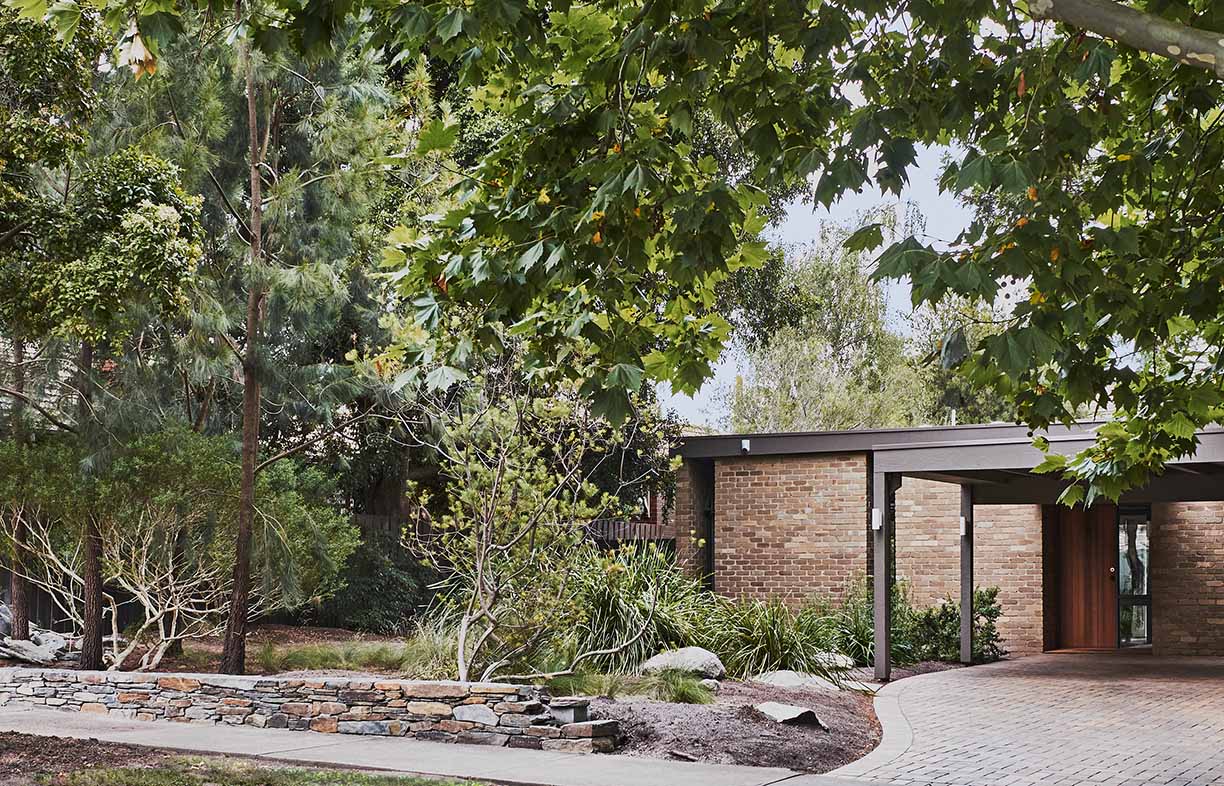Charging forward: Getting your home electric vehicle ready

Is there an electric vehicle in your future? Even if you don’t have immediate plans to buy an EV, if you’re building a new home or renovating it’s a good idea to keep in mind the requirements for housing and charging one. Your house – and its wiring – should last for decades, and the electrified transport future will be here sooner than you think.
Around the world, electric vehicles are claiming an increasing share of the new vehicle market, especially in countries like Norway where government incentives have encouraged their uptake. In Australia, although sales of EVs tripled last year they still account for only 0.6 per cent of all new car sales. Until recently, models available here were expensive and had a limited range, but that is rapidly changing. Several new, more affordable models launched in 2019, and more will become available in 2020.
EVs are both economical to run and have lower carbon emissions – and these will fall further as our electricity grid goes more renewable. Though exact figures vary, it’s clear that they are the best option for those who need to drive but want to significantly reduce their carbon footprint (see ‘Understanding EV emissions,’ Renew 143). And by recharging with off-peak electricity overnight or using excess solar generation, EV owners can pay much less per kilometre than they would for petrol.
EVs have clear benefits, but making the shift requires a bit more forethought than bringing home a new petrol car. If you are interested in getting an EV – even if you’re not quite ready yet – the design phase of a renovation or new build is the perfect time to start considering what you need.
How does EV charging work?
You can use a regular household power point to charge an EV, but it’s fairly slow (about 10 to 20 kilometres of range per hour) and in homes with older wiring it can result in some overheating and thus wear and tear on the power point contacts and connections behind. The better option is to install an electric vehicle supply equipment (EVSE) charging port, which can allow for a faster charge. There are various types of EVSEs and plugs, and it can be tough to get your head around the options (see the EV buyers guide in Renew 148 and ‘Plug wars’ in Renew 141 for more), but this decision can be left until you’ve decided what kind of car to purchase.
Most existing homes have a single-phase electricity supply, which will allow you to charge most EVs overnight at 7 kilowatts, or around 40 kilometres of range per hour. With a three-phase electricity connection instead (which can be costly to install, especially in an existing home), you can support a faster EVSE that can charge at up to 22 kilowatts, or 120 kilometres of range per hour, recharging your car in just a few hours. Your specific model of car and the type of battery it uses will also influence the charging rate that’s possible.
More and more public chargers are being installed in public locations like the car parks of shopping centres and office buildings, and at highway service stations. These chargers use high levels of current that aren’t available to homeowners, and can fully recharge your car in under an hour.

Powering up at home
So what can you do to get your existing home ready to ‘plug and play’ when it’s time for an EV? Consulting a licenced electrician is an important first step – something you will be doing anyway if you are renovating. They will be able to tell you the capacity of your existing connection to the grid and whether you need to replace any wiring or update or expand your switchboard to accommodate an electric vehicle charger. You’ll also need to check how much energy your existing appliances draw; if you’re already regularly approaching the capacity of your grid connection, you’ll need to upgrade it or make other changes to your home’s energy use and efficiency to enable EV charging (for more details on these considerations, see Renew 143, ‘The EVs are coming’).
Once you know that you have a suitable connection to the street and have space for a circuit breaker on your switchboard, you’ll be ready to install the wiring for your EV charging, and later your EVSE of choice.
If you are planning a new home, you’ll have a bit more wiggle room. When putting in a new grid connection it’s often possible to get three-phase power to your house without a huge extra cost, which allows for much faster EV charging. You also have the opportunity to make design choices that will increase your charging speed and safety, which we’ll outline below.
Whether you go with faster three-phase charging or slower single-phase, experts say you don’t need to worry about getting enough charge if you plug your car in overnight. “My Tesla can do more than 400 kilometres on a full charge, and I can recharge it at 50 kilometres of range per hour at home,” says Kim Cramer of Reliable Energy Solutions, who has worked with Standards Australia on EV charging. “Even if I got home at 10pm with my car completely exhausted, I could plug it in and at 6am it’d be ready to go again.”
Kim also notes that the average Australian round trip commute is less than 100 kilometres. So before you go spending extra on setting up for the fastest charging, consider how often you’ll really need it, especially if there are places you can easily plug in for a top-up at work or out and about.
Designing for EVs
There are a few key tips experts say to keep in mind when designing a home or retrofitting for an EV. Understandably, most of this advice relates to your garage, carport or parking space and the electrical wiring needed for charging your future car: plan to install this wiring now. Consider carefully the location of your EVSE with respect to where the car will be parked – the best option is close by and easily accessible for plugging in your EV when you arrive home. If you have a tight parking spot, make sure your charger isn’t located where you could accidentally hit it with your car or run over the cable.
If your car will be parked in an open parking space (e.g. on a driveway) or in a carport that is more open to the elements than a garage, make sure your EVSE is rainproof – it should have an ingress protection (IP) rating of 65 or higher – and try to locate it in a spot with as much weather protection as possible, such as under a porch. Heat is another factor to keep in mind: install your EVSE out of direct sun. In addition, you don’t want your car’s battery getting too hot, or its lifespan will be shortened. If you live in a very hot climate, consider a garage if possible and insulate your garage door to help the temperature inside remain stable – and make sure you buy an EV with active thermal management for the battery (most have this, only a few don’t).
Of course, not all of us live in houses with a dedicated parking space within a short step of the front door. For the rising numbers living in multi-residence dwellings, EV charging can be a challenge. In an apartment building with its own parking garage, it’s sometimes possible to wire an individual EVSE, but it can cost as much as $10,000. Some strata are advertising themselves as ‘EV-ready’, meaning the electrical supply can be used for EV charging, so check out what this involves if you’re in the market for an apartment (for more on charging EVs in strata, see Renew 145, ‘Strata strategies’).
For those without a parking spot at all, such as older inner-suburban homes that rely on street parking, the situation is even trickier. You could still go electric for transport by relying on public chargers, for example getting into the habit of recharging your car at a shopping centre while you do the weekly shop, or at your workplace. And various on-street private chargers are popping up in many cities around the world (see ‘EV street charging,’ Renew 150) and will probably be an option in the future here too.
Case study: Designed for EVs from the outset
Howard and Libby Elston built their home in Melbourne’s eastern suburbs with a holistic approach to sustainability, even powering their work site with solar energy (see Renew 148, ‘Built with solar, runs on solar’). Howard says that providing power for their first-generation Nissan Leaf was always part of the plan while designing the house.
“We sat down with a blank sheet of paper and a sustainable builder, throwing everything we could think of at it from a sustainability point of view. Being able to provide power for an EV was one of the core goals of the design,” he says.
The couple also considered the location of the charger while designing the garage. “The car drives in and the power point is right in front of the car’s charging port,” explains Howard.
Howard and Libby decided to go with the car’s three-pin lead for charging, installing a dedicated 16 amp circuit running to a special power point in their garage. The decision to use a standard wall outlet rather than an EVSE was made because their car is an older Leaf, which has a smaller battery than new models. The car can be fully recharged overnight even on this relatively slow charge.
Now, Howard and Libby are working on building a third home on their property in which they will eventually live. They’re looking to buy a new EV in the future, which would likely require faster charging due to the increasing battery size of new models. For this reason, they installed three-phase electricity to the new house. “That’s the advantage of a new build,” Howard says. “When you’re building you have the opportunity to put in the infrastructure that you need right from the start.”

Case study: Adding an EV to a solar-powered home
Peter McArdle and Teresa Wuersching, principals at Queensland-based ptma Architects, have recently started leasing a Tesla Model 3 for family and business use: it will cost around $70,000 over time. It’s charged mostly at home in the garage using the supplied EVSE on a 32 amp circuit installed for the purpose. The family’s 5 kilowatt solar system and two Tesla Powerwall batteries mean that most of the time they don’t need to draw on grid electricity to charge the car.
For people renovating or building, and considering getting an electric car in the future, Peter recommends keeping your electricity meter, switchboard, car charger location and (if you’re installing them) solar inverter and battery close together if possible. “It means easier servicing and lower cost; longer and more difficult cable runs are more expensive,” he says. “This won’t suit every design though, and your home is not always best planned around your car. Our garage is at a distance from our meter and switchboard, and the cost of running dedicated cables for faster charging was between $500 and $1000.”
He also points out that wifi or a data connection is needed for home batteries to work with monitoring systems, and car chargers may progressively need the same. “If your desired EVSE location is not near your router you may have connection issues, so plan an extra data point nearby.”
Peter is very happy with their solar, battery storage and EV setup. “It’s quite amazing to live at a time when for many of us it actually is a valid choice to have our home and transport largely driven by the sun.”
Further reading
 Ideas & Advice
Ideas & Advice
In praise of Accoya
Native hardwoods are beautiful, strong and durable, but we need to wean ourselves off destructive forestry practices. Building designer and recreational woodworker Dick Clarke takes one hardwood alternative for a test run.
Read more Ideas & Advice
Ideas & Advice
Energy efficiency front and centre: A renovation case study
Rather than starting again, this Melbourne couple opted for a comprehensive renovation of their well laid out but inefficient home, achieving huge energy savings and much improved comfort.
Read more


